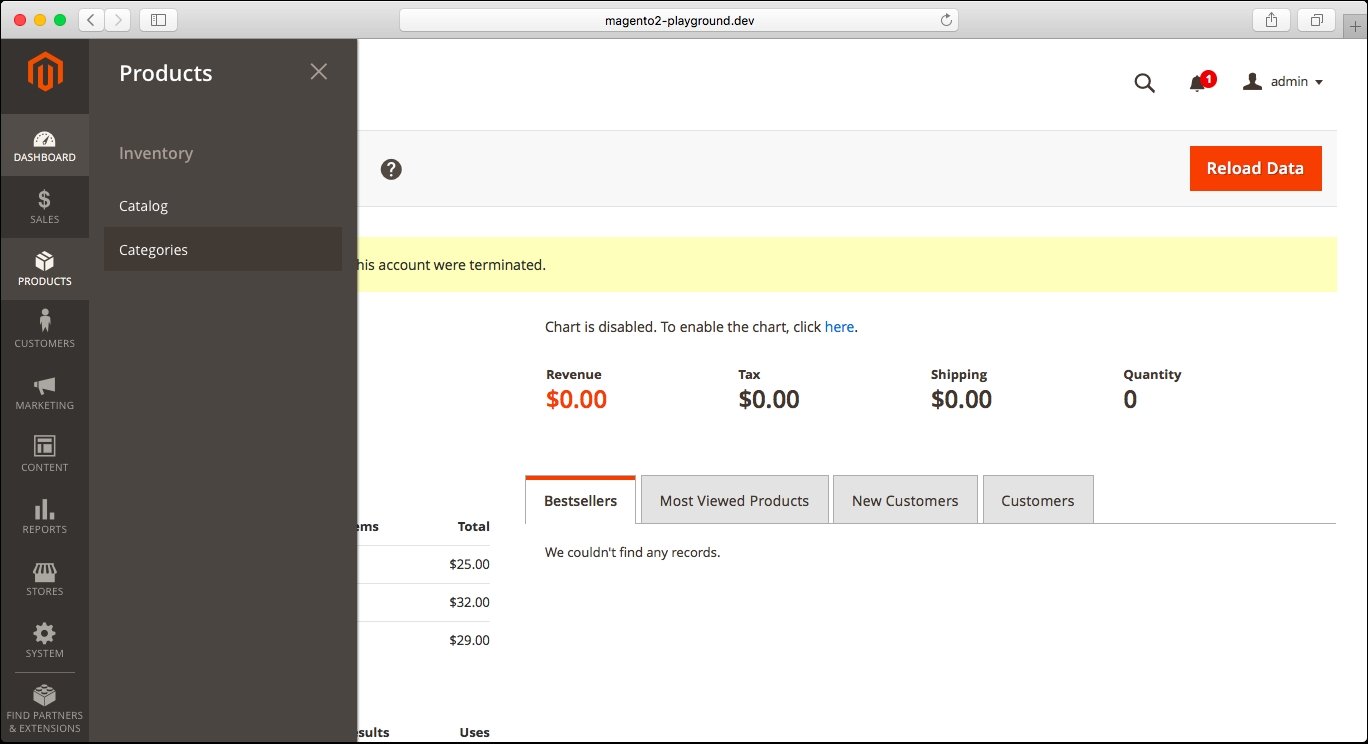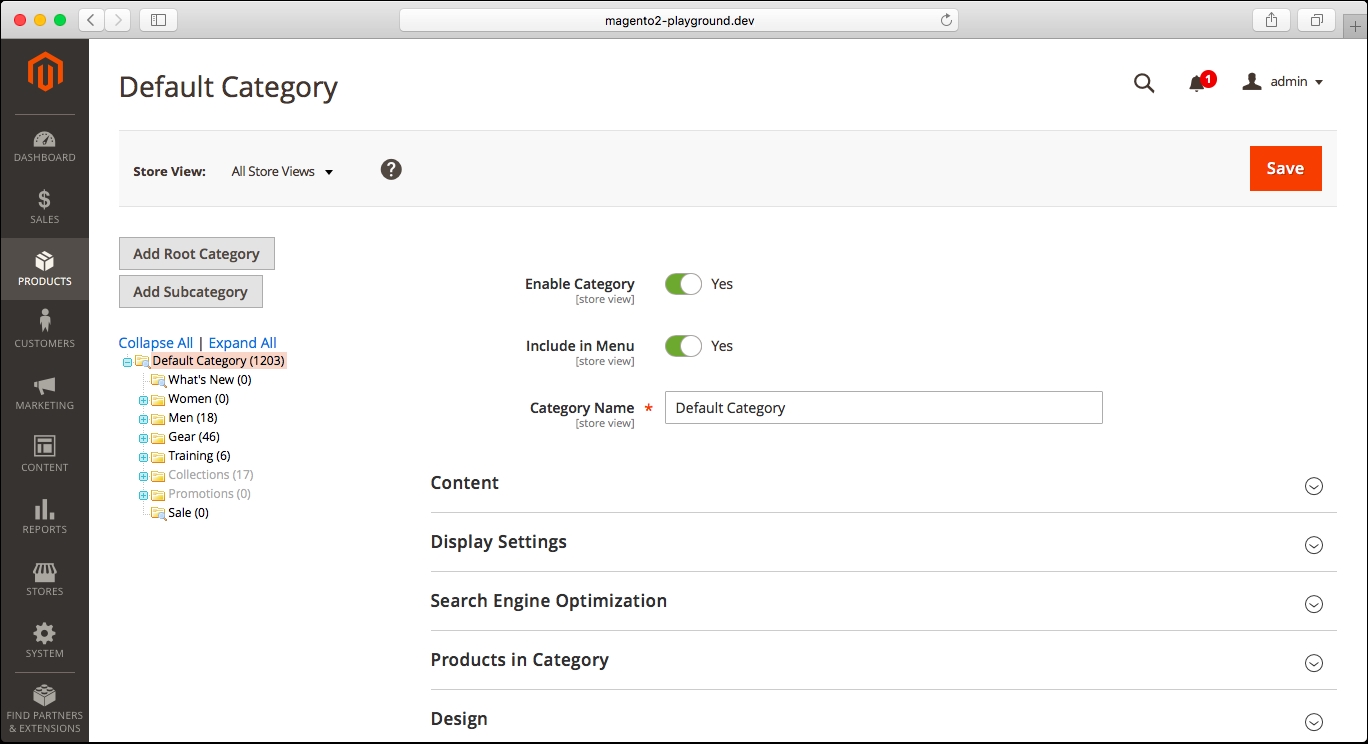Magento provides a way of organizing your catalog into different categories and subcategories. You can organize your catalog internally in the admin panel and offer to the customers a clear way of browsing your products on the Storefront.
You can manage the categories in your store by going to the PRODUCTS | Inventory | Categories section in the admin panel:

Once that section is loaded in the admin panel, you will see the category tree on the left, and the form to add and the edit categories on the right:

On top of the category tree, you will see two buttons:
Add Root Category: You can add root categories. This is useful to set up multiple store views, for example, a store for clothing and another store for electronics and computers. These stores will be separated store views, each one of them with a specific catalog contained in different root categories. An example of two root categories can be seen in the following screenshot:

Add Subcategory: You can add a subcategory for...



